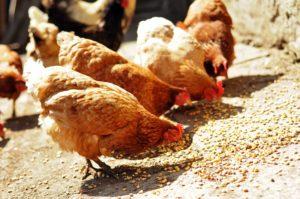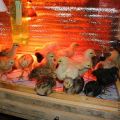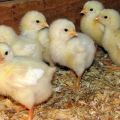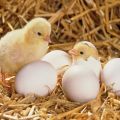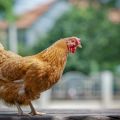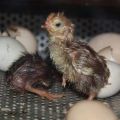Recommendations, the better to feed day-old chicks at home
How to feed day-old and older chickens is a question that often arises among novice poultry farmers when independently breeding offspring from eggs. It depends on how exhaustive, complete and reliable information on it a newbie will find, whether the business he has begun (breeding of egg or meat breeds) will be successful, interesting and profitable.
Chick Feeding Basics: What Beginners Need to Know
Novice poultry breeders need to learn 3 main principles of feeding chickens:
- Feed for young animals of all ages should include only natural, non-spoiled ingredients.
- Feeding at home chickens, hatched in an incubator or taken from a brood hen, must be done at the same, strictly defined time.
- Chickens shouldn't be hungry. In the first 8-10 days, they need to be fed every 1.5-2 hours for this.
In addition to timely and correct feeding, young chickens also need water - for this, a container with clean, boiled and warmed up to room temperature water must be in the box with the young.
How to feed egg breeds chickens
In order to raise highly productive layers and cockerels from egg-laying chickens, they must be properly looked after and fed from the first days of life.
Newborn
After the incubator or brooding, newborn chicks should be allowed to dry and get back on their feet. At this time, they do not need to be disturbed, provide them with food that they will not touch. As soon as the fluff dries and becomes even, acquires a characteristic color, the chickens need to put food in the box.
From the first day, a small amount of dry, finely ground wheat or corn grains are included in the diet, placed in a small flat container.
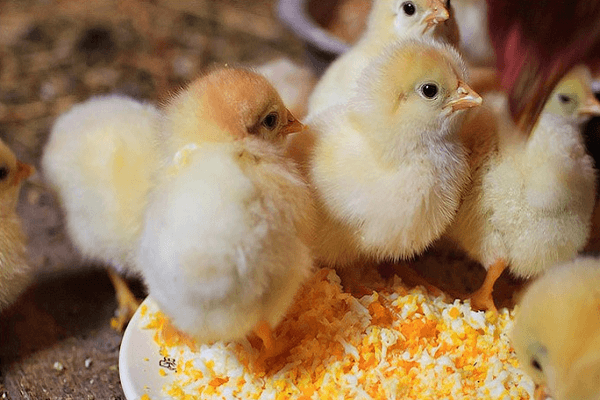
Daily allowance
On the second day, a feed is prepared for small chickens, consisting of the following components (in terms of 1 head):
- crushed mass of hard-boiled eggs - 2.0-2.5 grams;
- low-fat cottage cheese - 1.0-1.5 grams;
- semolina - 1.5 grams.
Up to a week
Up to 7 days of age, young animals are fed with the same mixture as day-old chicks, with the gradual addition of cereals and ground wheat to the feed.
Older than a week
Weekly chicks are fed with a protein-rich mixture of cereals (crushed or milled wheat, corn), various cereals (semolina, buckwheat, oatmeal), with the addition of a small amount of fat-free cottage cheese.
Two week old chicks continue to be fed the same formula as week old chicks.
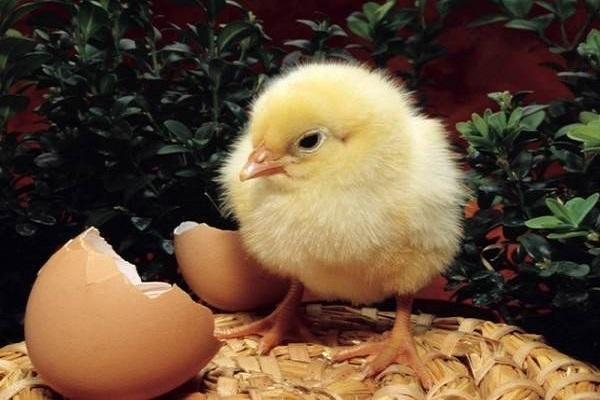
Monthly
Chicks over 4 weeks of age are gradually transferred to medium-sized grain feeding, and from 6 weeks of age they begin to give whole grain. At the same time, feed rates are gradually increased. Also, the grown bird is already given crushed grass mass, a small amount of shells, chalk, pebbles.
At three months
At the age of three months, young animals are transferred to a standard diet, consisting of specialized feeds, independently produced grain mixtures.
How to feed chickens of meat breeds
In order for broilers to gain weight as quickly as possible, they, like young eggs of the egg direction, must be properly fed from the first days.
There are two main technologies for growing young meat breeds - intensive and extensive. Each of them corresponds to a certain feeding ration.
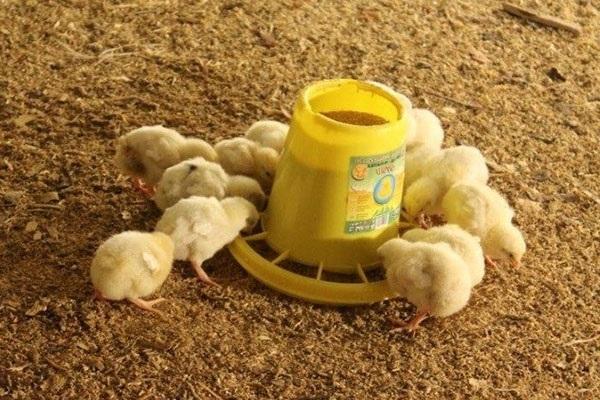
Intensive
With this technology of growing, young animals are kept in small cages, 10-12 individuals per 1 square meter. For normal growth and development of a bird in such a specially insulated and well-ventilated room, the temperature is maintained from 17 to 20-21 C and air humidity 60-70%.
For feeding the young broilers raised by this technology, special mixed-age feeds for meat breeds are used. To improve the digestion process, various limestone materials, fine gravel, dry wood ash must be placed in the feeders. Broilers are raised in this way all year round.
Extensive
With this rearing technology, the young live in an ordinary spacious chicken coop, feed on both compound feed and green grass, every day they look for additional food on their own on a large outdoor yard or on a grassy pasture, where broiler chickens are also released daily.
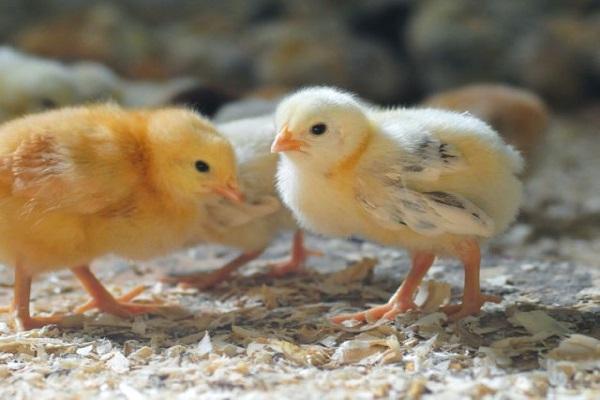
This technology is designed for short-term (no more than 4 months) growing broilers and is used only in the warm season. In early spring, as well as in late autumn and, moreover, in winter, it is not applicable due to the lack of natural food on the pasture located next to the hen house and a walking yard and a significant drop in air temperature in an uninsulated simple room.
How often should the chicks be fed?
Feeding frequency depends on the breed and age of the bird.
So, the frequency of feeding young egg breeds at different ages is:
- 1-10 days - 6 times per knock (feeding every 2-3 hours);
- 10-45 days - 5 times a day (feeding every 2.5-3.5 hours);
- over 45 days - 4 times a day (feeding every 3.5-4 hours).
Chickens of meat breeds are fed more often:
- 1-7 days - 8 times a day (feeding every 1.5 hours);
- 14-20 days - 6 times a day (feeding every 2 hours);
- 21-27 days - 4 times a day (feeding every 3 hours);
- from 28 days of age and up to slaughter - 2 times a day (feeding every 6 hours).
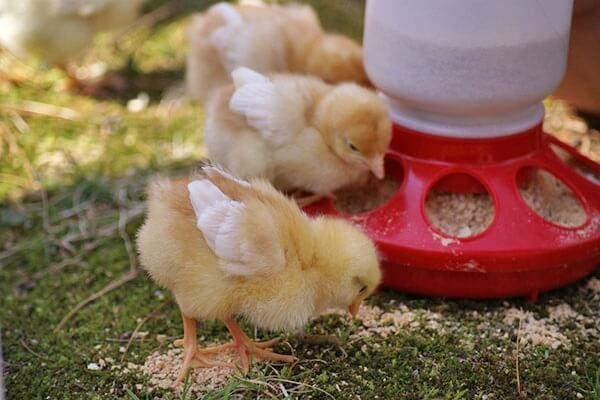
At what age can shells be given to chickens?
Eggshells are given to chickens starting from the 10th day of their life. In this case, the shell is used, removed from a well-boiled egg. In order for the chicks to eat more conveniently, it is thoroughly crushed to the state of flour, consisting of particles no more than 1.0 millimeter in size.
On a note. The shells fed to young chickens are rich in calcium and various vitamins - this helps to strengthen the bones of chickens, provide their body with a large amount of vitamins and trace elements, minerals and other substances necessary for normal growth and development.
Experts recommend using homemade eggs as a source of shells - their shell is more durable and rich in the beneficial substances described above.Store eggs, in comparison with homemade ones, have a weaker and, accordingly, less useful shell..
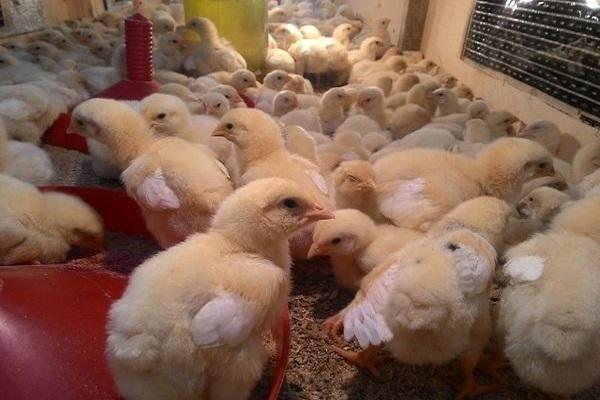
Important points in the formation of the diet of young animals
When raising and feeding chickens, you must adhere to the following important rules:
- The feeders are filled only to 1/3 of their volume - this is necessary so that the feed mixture does not spill out of the feeder and is not trampled by the bird.
- Before filling in a new feed mixture, the trough is thoroughly cleaned of residues that can become a source of decay.
- Weak and malnourished chickens are pipet-fed with a mixture of yolk and low-fat milk, separately from the rest.
- The water in the drinking bowl or its replacement tank is constantly renewed, preventing it from contamination with feed particles.
- In order to reduce the risk of digestive disorders and infection with various diseases, a weak solution of potassium permanganate is added weekly to the water.
When the grown-up young are kept in chicken coops, the room itself, feeders and drinkers are thoroughly cleaned and disinfected once a week with a 5% formalin solution, a soap emulsion.

